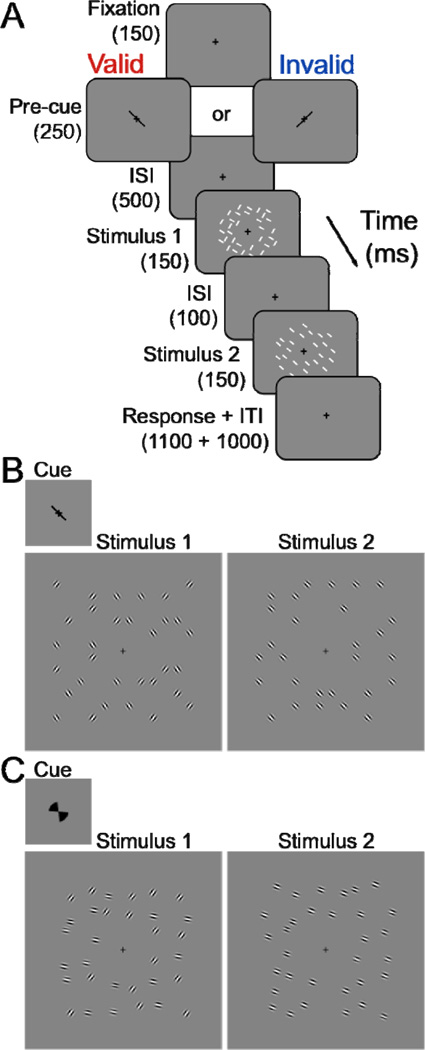Figure 2. Experimental protocol.
(A, B) Feature-based attention (FBA) task. Observers performed an orientation discrimination task and reported whether the orientation in stimulus display 2 was slightly clockwise or counter-clockwise of the closest orientation in stimulus display 1. Stimulus 1 and 2 had the same contrast, which varied from trial to trial. ISI, interstimulus interval; ITI, intertrial interval. The white lines in both stimulus intervals indicate stimulus locations that were randomly jittered. (B) Stimulus displays in the low-uncertainty experiment. Top (inset), low-uncertainty cue, left or right tilted line. Left panel, stimulus 1 consisted of two spatially interleaved orientations around fixation. Right panel, stimulus 2 consisted of thirty-two grating patches with identical orientation, which was slightly clockwise or counter-clockwise of one of the orientations in stimulus 1. (C) High uncertainty experiment. High-uncertainty cue, left or right tilted segments. Stimulus displays, in the high-uncertainty experiment. Same format as panel B. Stimulus 1, the right-tilted orientation could be one of 21 possible orientations between 15° and 75°; the left-tilted orientation could also be one of 21 possible orientations between −15° and −75°. The two orientations varied randomly and independently, with the constraint that they were at least 60° apart. Stimulus 2 was slightly clockwise or counter-clockwise of one of the orientations in stimulus 1.

